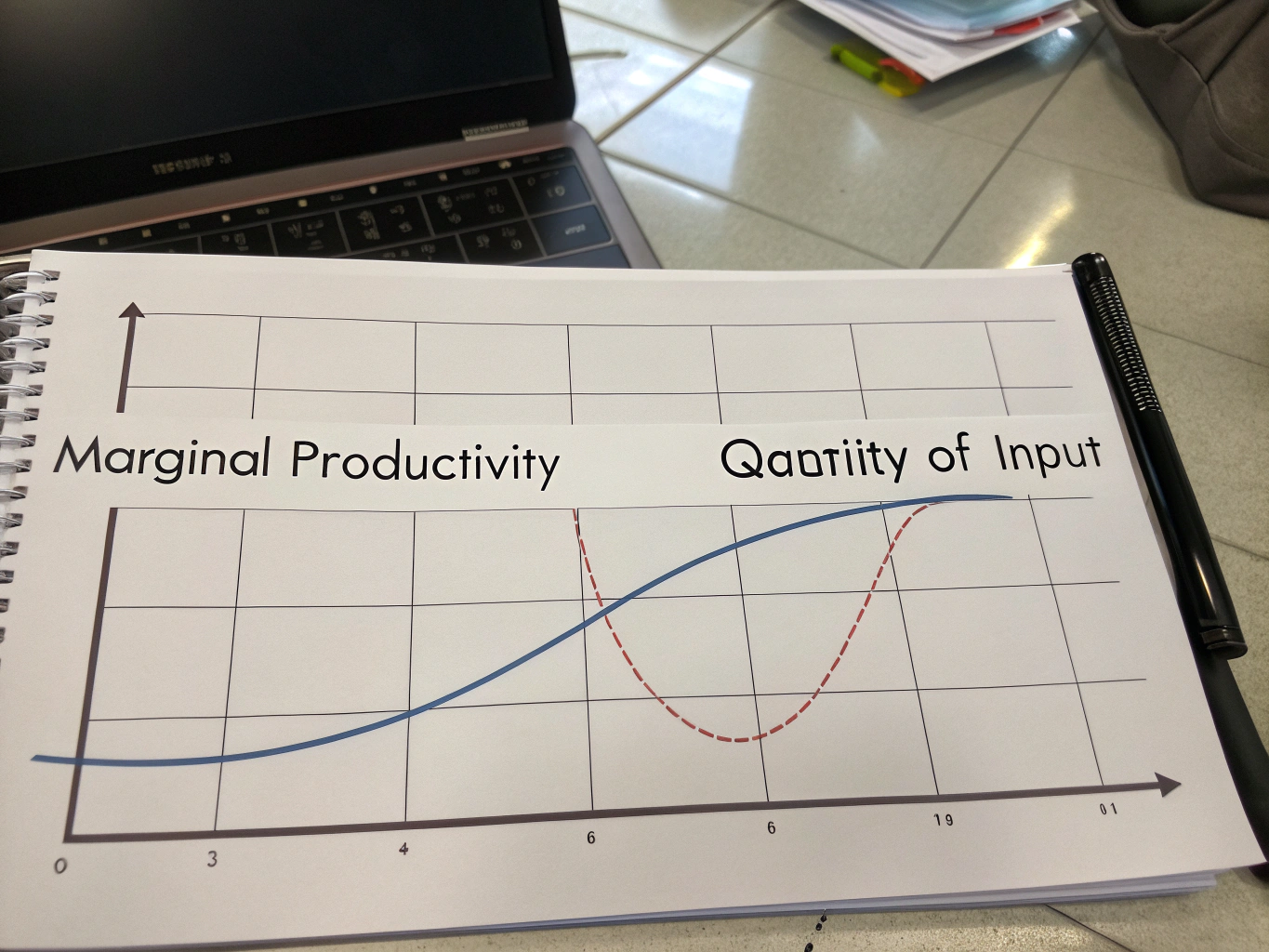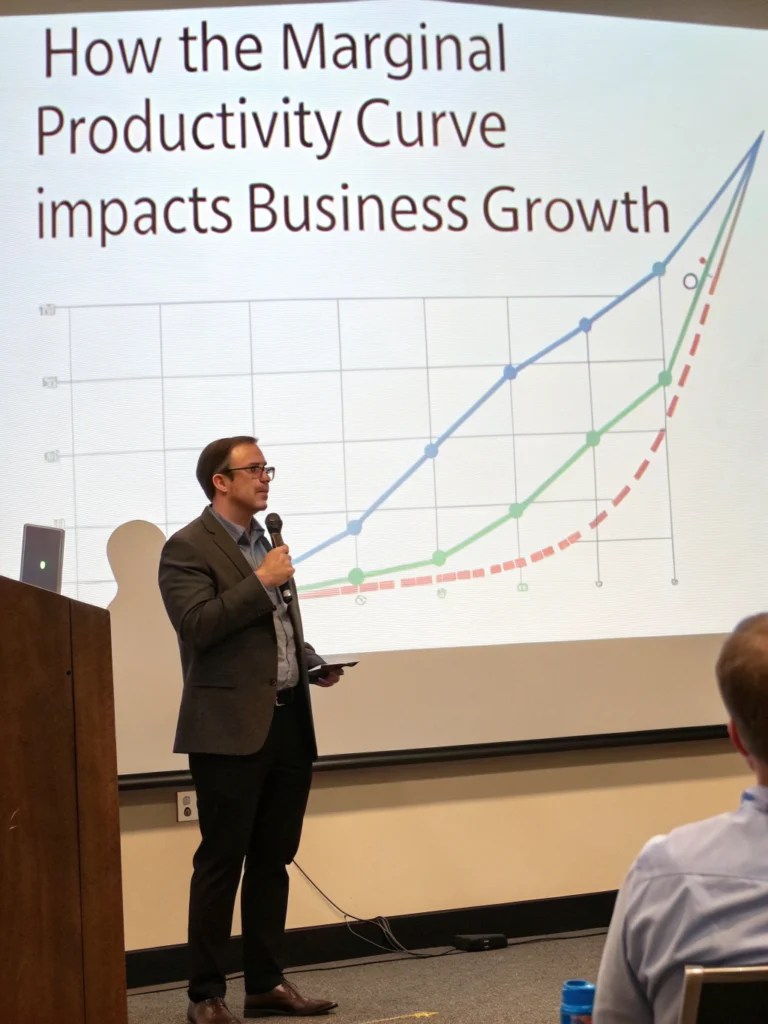How the Marginal Productivity Curve Impacts Business Growth
Understanding the marginal productivity curve is crucial for any business aiming for sustainable growth in 2025. This concept provides insights into how effectively a business utilizes its resources, especially labor, to maximize productivity and profitability.
What is the Marginal Productivity Curve?
At its core, the marginal productivity curve illustrates the additional output that can be generated by adding one more unit of input, such as labor. In simpler terms, it helps businesses understand the relationship between inputs and outputs. By analyzing this curve, businesses can make informed decisions about resource allocation, which can significantly affect their overall operations.
When a business is aware of its marginal returns in business, it can fine-tune its business growth strategy. If the curve indicates diminishing returns, it may signal that further investment in that area is not efficient. Conversely, if the curve shows increasing returns, the business may want to invest more to leverage those gains.
The Importance of Productivity and Profitability
There's a strong link between the economics of productivity and profitability. Businesses that can effectively analyze and adapt their practices according to the marginal productivity curve often see improved productivity and profitability. To achieve this, organizations must focus on maximizing output relative to input through strategy, training, and innovative practices.
Examples of Business Growth Strategies
-
Investing in Training: When workers are better trained, they perform more efficiently, thus moving the marginal productivity curve upward.
-
Adapting Technology: Utilizing the right tools can enhance workforce efficiency. For example, implementing AI-driven tools can help organizations streamline operations, leading to potentially higher profits.
-
Resource Allocation: Understanding which departments yield the highest outputs can help leaders allocate resources properly, thus ensuring that expenditure translates into profit.
-
Feedback and Adaptation: Continuous assessment of output versus input means businesses can pivot their strategies when they notice the marginal productivity curve is leveling off.

Improving Workforce Efficiency
To stay competitive, businesses must focus on improving workforce efficiency. The marginal productivity curve can help identify bottlenecks or inefficiencies in processes. Strategies might include:
- Regular Training: Keep staff updated on new technologies and methods.
- Offering Incentives: Motivation plays a key role in productivity. Inciting competitive spirits through bonuses can yield better results.
- Streamlining Processes: Evaluate existing workflows and look for areas that can be simplified or automated for better results.
Business Decision Making in 2025
As we move into 2025, business decision making must be data-driven. Sales reports, employee performance metrics, and market research should all feed into understanding the marginal productivity curve. Armed with this information, you'll not only formulate effective business growth strategies but also make proactive adjustments to enhance efficiency and drive profits.
Conclusion
Understanding the marginal productivity curve is not just an academic exercise; it's a vital component of a thriving business in 2025. By recognizing how different resources impact productivity and profitability, businesses can create effective strategies that lead to impressive growth.
For more insights and tools to enhance productivity, check out our resources. Dive deep into valuable strategies with the AI for Productivity eBook + Checklist: Supercharge Your Efficiency in 2311. You can also explore the ADHD Productivity Power Pack: Ebooks, Guides, Checklists, Workbook & Tools to Master Focus, Time Management & Organization.
FAQs
Q1: What is the marginal productivity curve?
A1: It's a graphical representation showing the additional output gained by adding one more unit of resource, typically labor.
Q2: How can I use the marginal productivity curve in my business?
A2: Use it to determine how effectively resources are used and to optimize their allocation for improved output and profits.
Q3: Why is understanding productivity important for profitability?
A3: Higher productivity typically leads to higher output for the same input, which can drive higher profits if managed correctly.
Q4: What tools can help improve workforce efficiency?
A4: Productivity tools, employee training programs, and operational software can help streamline processes and enhance efficiency.
Q5: How can I implement a business growth strategy based on the marginal productivity curve?
A5: Analyze your current input-output ratio, invest in areas showing potential for higher returns, and continuously evaluate and adapt strategies based on performance data.

